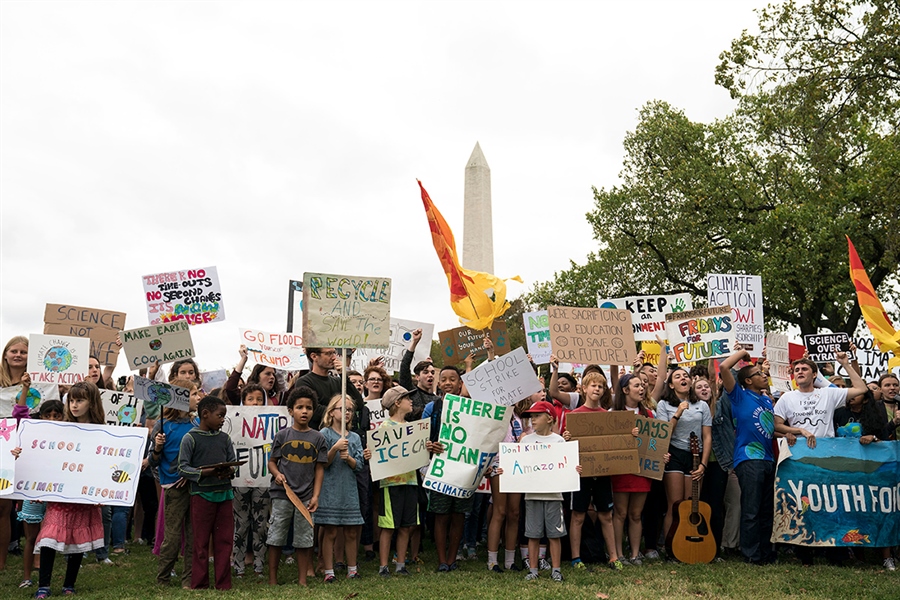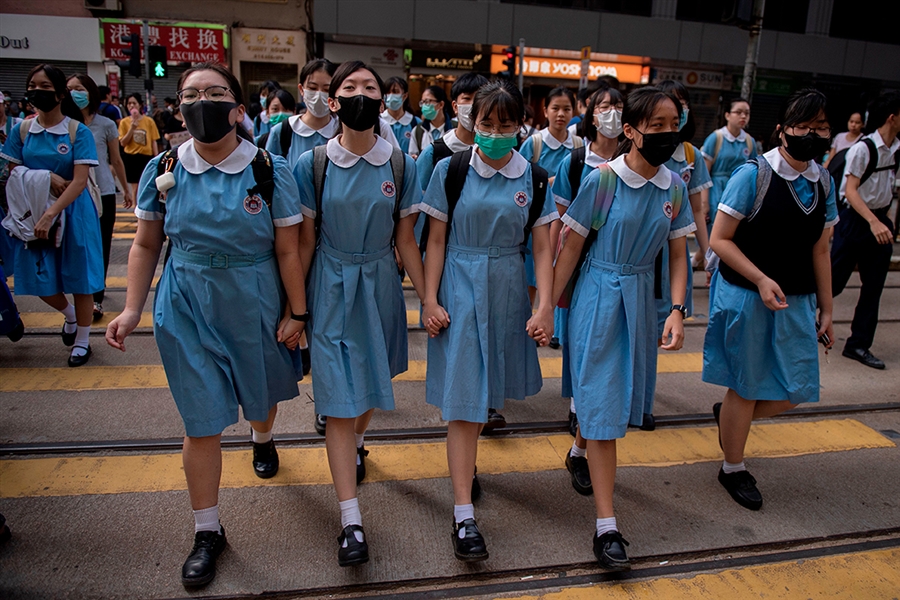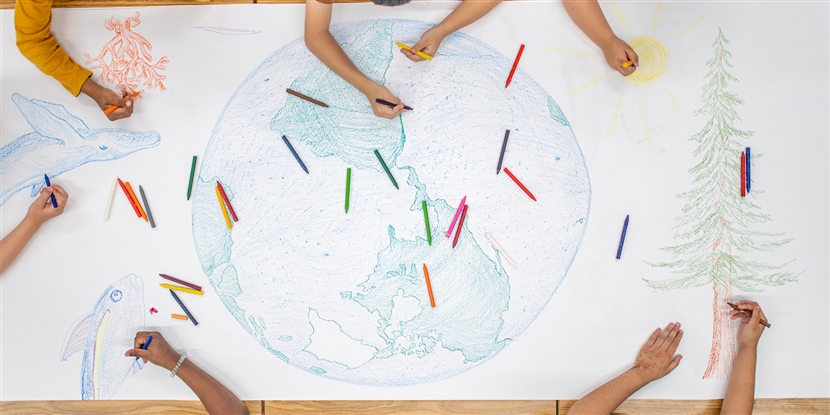By Bob Bain, OER Project Expert
Michigan, USA
“There are two questions you must ask your students to evaluate your courses,”or so Mortimer Adler, the philosopher and founder of the Great Books Program, told me as I drove him to the Cleveland airport in 1988.
The drive to the airport ended my 24 hours hosting Dr. Adler's visit to Cleveland and my high school. And it happened after he and I co-taught one of my high school classes on an auditorium stage in front of an audience of about a thousand students and Cleveland-area educators. Among his many memorable comments during the visit, his answer to my question about assessing teaching has had the most enduring effect. It challenged me to rethink instructional goals, demanding I see beyond the end of the class and encouraging me to figure out ways to help my students make the history they learned usable.
“The first question to ask students must be, ‘Do you understand more now than you did when you began this course?’” Adler added, “Notice, I did not say know more but rather understand more!”
For Adler, “knowing more” and “understanding more” are critical but distinctive goals for teaching. What is the distinction? Knowing more is about being informed, as Adler has explained in his writing. It involves recognizing that something is or is not the case. To understand, however, demands more. It requires meaning-making, considering why something is or is not the case, building connections to other "stuff," seeing the parts in terms of the whole, and integrating ideas, facts, and experiences into our thinking and lives. Understanding history makes what you know about the past more valuable, practical, and usable.
 2019 Climate Strike outside White House, Washington, DC. © Sarah Silbiger/Stringer/Getty Images.
2019 Climate Strike outside White House, Washington, DC. © Sarah Silbiger/Stringer/Getty Images.
While I share Adler’s thinking about the importance of teaching for understanding, his course evaluation question has added a wrinkle and a challenge to my courses.
The wrinkle? Of course, good history courses grow students’ understanding. But, in addition, good teaching must help students “understand” how and where their understanding has changed. Self-awareness of what they learned and the skills needed to connect or apply that learning to the present and the future makes knowledge valuable and usable.
The challenge? How to engage students in such metacognitive reflection in a world where schools only test knowledge? Two tweaks to end-of-course activities have helped me manage this challenge.
First, I’ve added a few questions to typical review assignments that ask students to reread opening free writes,[*] journal entries, projects, and course materials. In OER Project courses, this is easy since the introductory and frame videos, Driving Question/Era and Unit Problem Notebooks, cognitive tools, and readings all live online. To these activities, I added a few questions hoping to stimulate metacognitive purpose:
- In what areas or on what topics has your thinking changed? In what areas have you changed your thinking the most? The least?
- What surprised you most about what you studied this year?
- What do you think is worth remembering from what you studied this year?
- What thinking practices—reading, writing, reasoning—do you think you changed the most? The least? Which are the most important to continue developing?
Second, in the last month of a class, I added two “Memos to My Future Self” assignments. In one prompt, I focus students on the conceptual “stuff,” such as critical events or concepts studied, including thresholds in BHP, and graphic biographies and frames in WHP. For homework, students have to identify what they think were the most important concepts and events they studied and why. Sometimes it helps to give students a minimum number of concepts or events to discuss (seven or so, for example). Then, I have students use these to write a letter to their future selves explaining what was important, why it was important, and how they imagined each would connect to their life beyond school. In short, the activity asks students to locate the history they learned outside the classroom context.
 Students cross a road as they head to school after participating in a joint 'school human chain rally' in Hong Kong on September 12, 2019. © Nicolas Asfouri/AP/Getty Images.
Students cross a road as they head to school after participating in a joint 'school human chain rally' in Hong Kong on September 12, 2019. © Nicolas Asfouri/AP/Getty Images.
The second memo focuses students’ attention on the disciplinary practices they studied, such as reading primary and secondary sources, reasoning about causes and consequences, evaluating significance, making historical arguments, and working effectively at different scales of time and space. Again, students review previous activities and cognitive tools to reconsider these practices and how their skills have grown. Then, they write a letter to their future selves identifying what makes each important, why each should be memorable, and how they imagine each connects to their life once the course ends.
I collect and read both memos, adding only a handful of comments before returning them to the students. A few times, I’ve given students envelopes to self-address and have then mailed their memos to them in late August, a practice I wish I’d done more often.
Someone once said that education is what remains once you’ve forgotten what you learned in school. The tweaked review assignments and future memos foreshadowed the wisdom of that adage. In both activities, students focus their attention on big ideas, concepts, or skills. They rarely reference factual details unless it’s a fact that has shaken their previous thinking. The memos give me a glimpse into what students think is important and how they imagine they will translate their learning into the present and their future.
In addition to encouraging me to create activities to help transform students’ knowledge into usable understanding, Dr. Adler's conversation stimulated me to build my course evaluations around his two questions.
Oh, the second question?
“You must also ask students if they enjoyed the course.” Adler paused before adding, “When done well, all study will yield both understanding and pleasure.”
Simple, concise, and essential questions to ask students: Do you understand more now than you did at the beginning of the course? Did you have fun?
And these are great questions to ask ourselves.
So, my OER Project colleagues: Did your understanding of teaching and learning grow this year? Has it become more useful and usable? And did you enjoy teaching the courses and have some fun?
Hoping everyone can answer with a resounding and enthusiastic “Yes.”
Looking for more? Join us in the OER Project Community today! And if you aren’t registered with us yet, create an account here for free access to the OER Project Community and more.
[*] I open all my courses with a free-write asking students in my world history course to write a history of the world, or in my teacher education classes, to design a lesson for a history class. Initially, I used these to capture students’ prior knowledge. In addition, I now return these at the end of a course, to enable students to see changes in their previous thinking.
About the author: Bob Bain is associate professor in the School of Education and in the Departments of History and Museum Studies at the University of Michigan. Bob is the Chair of Secondary Teacher Education and the director of U-M’s World History and Literature Initiative. He has worked on both the Big History Project and World History Project since their inception. Before coming to the U-M in 1998, he taught high school history and social studies for 26 years. Bain’s research centers on teaching and learning history and the social sciences in the classroom, online, in museums, and at home.
Cover image: Children coloring a mural of the globe. © FatCamera/Getty Images.
 For full access to all OER Project resources AND our amazing teacher community,
For full access to all OER Project resources AND our amazing teacher community, 
